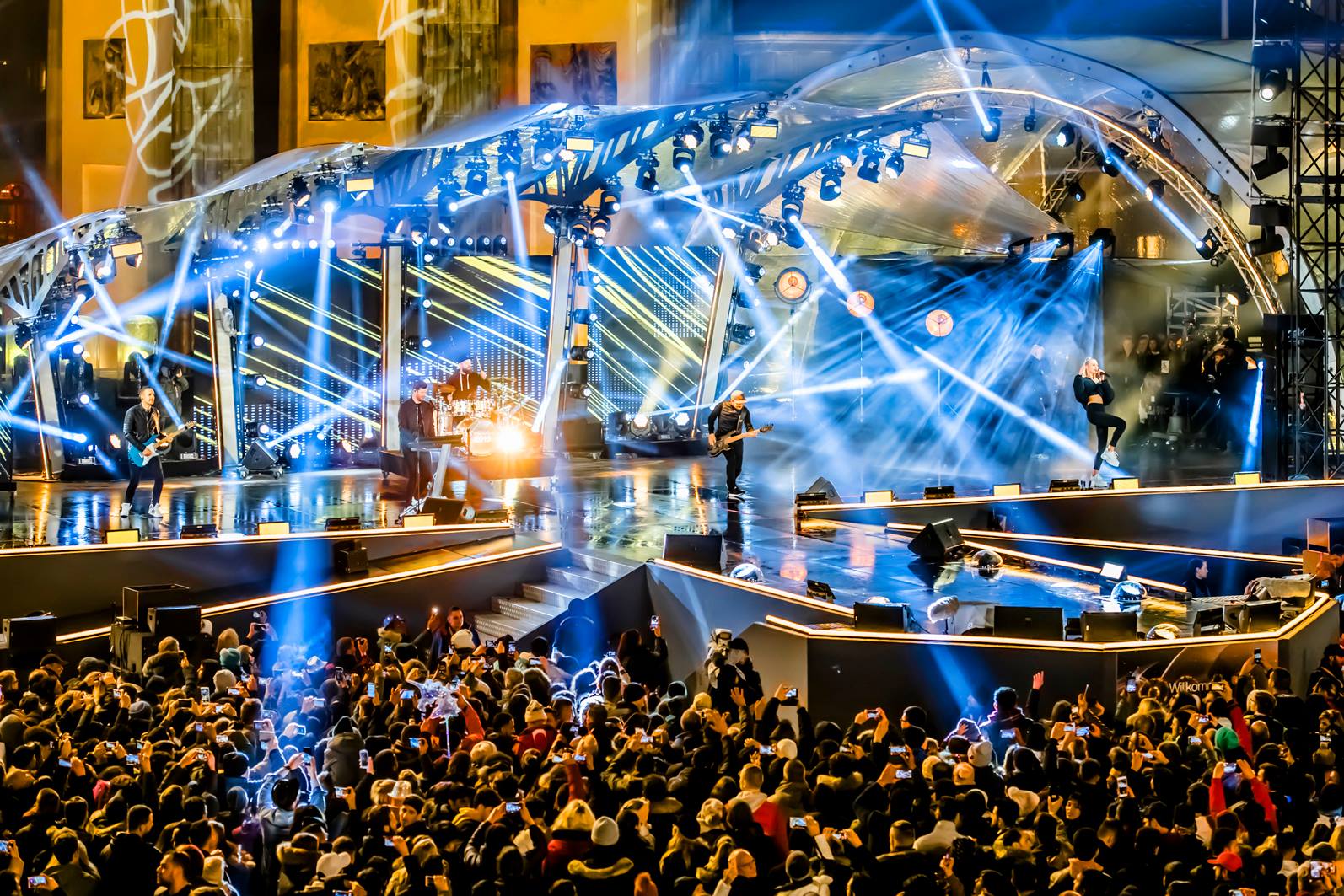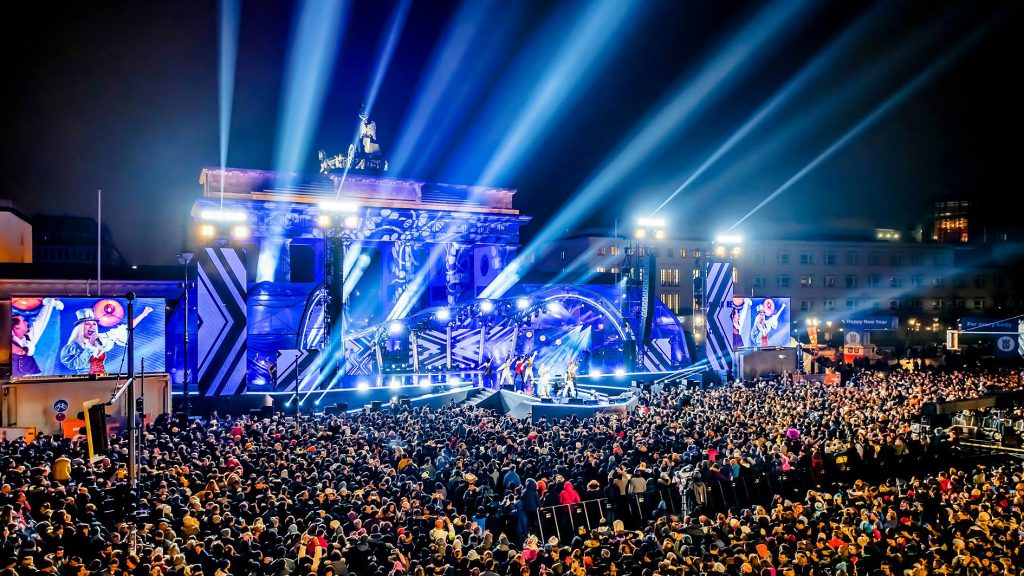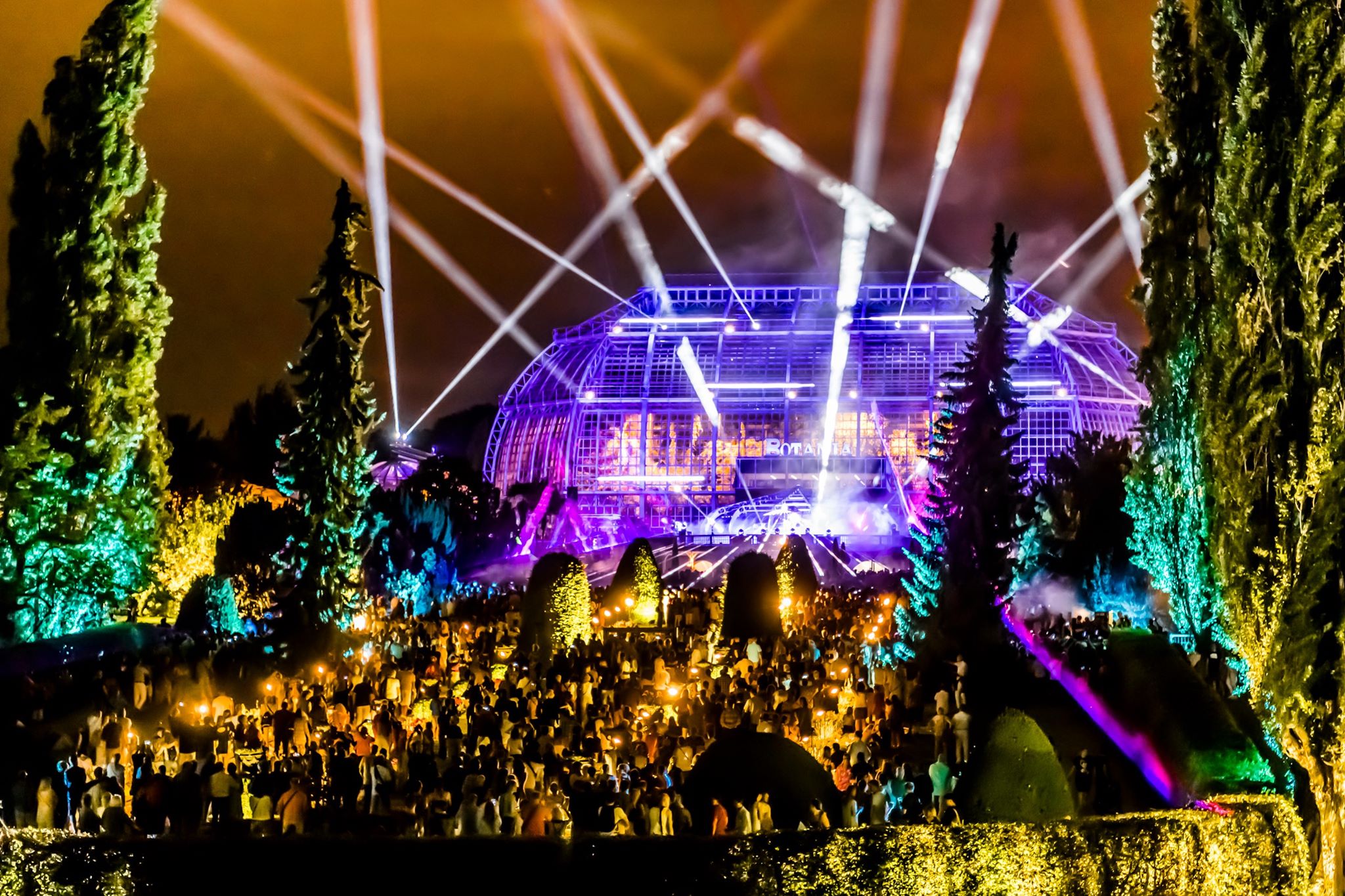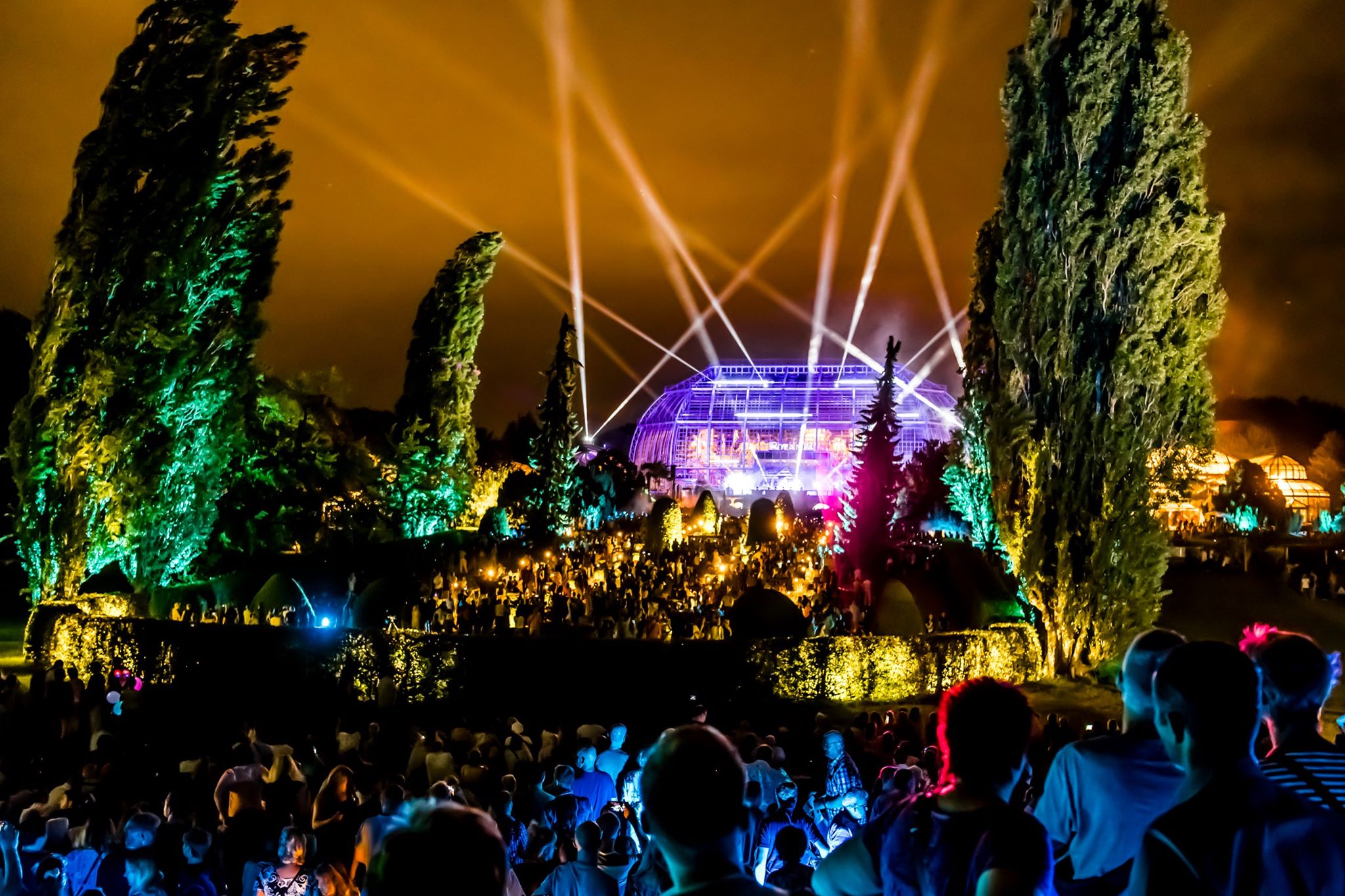Denny Arndt Outlining Stages
Posted on August 1, 2019
For lighting designers, the concert or festival stage is like an artist’s canvas, a welcoming space waiting to come alive with color and movement that will later appear to wrap themselves effortlessly around the music of the moment. Like any canvas, this stage has a frame, and it is in the perimeter area that Denny Arndt believes designers can add a compelling extra dimension to their work.
Rather than viewing the border of stage as something that contains his design, Arndt views it as an important extension of the panorama he creates. This was made beautifully clear to us after we saw his design at Berlin’s Brandburg Gate last New Year’s Eve that drew one million revelers. Using 160 LED strips, he not only set off the angular stage brilliantly against the Berlin night, he also involved them in creating myriad looks, most often in coordination with video panels, for the 50 different acts that performed at the event.
We caught up with Arndt to talk about his approach to outlining stages in light. True art in production lighting, we agreed, involves not only the stage/canvas, but the stage as well.
We were very impressed back on December 31 by how dramatically you outlined the Brandenburg Gate stage for the Berlin NYE event. Do you approach your design work differently when you have to outline an area that incorporates a building as opposed to a conventional stage?
“Basically, my goal is to support the ideas of the architect or set designer, and to support their vision with LED strip lights. However, in the case of a building, I must also always keep the construction in mind, because a building is not meant to be a scenic area in the first place. That‘s why not all looks that are possible are also achievable when you are working with a building. Design-wise for a stage, I try to fill spaces between video walls and extend them with the sticks. Always, a goal for me is to create background elements and achieve clear lines that outline the structure.“

Why do you like to outline stages and other structures? Why not just light them, rather than have them outlined with strip lights? What does the outlining contribute to the overall design?
“I like to accent the shaping, because if you light an object the traditional way it looks most of the time a bit flat. Working with sticks to define the entire stage adds a new layer. This way your stage comes alive. You have something that is more active than you would get if you just illuminated and framed the scenic area.“
When you light a festival or event stage that a lot of different artists will appear on, do you use your strip lights to give the stage a different look so it’s unique for each artist? If so, how do you do this?
“I always like to start with a fitting picture for the artist. After that it depends on the kind of music and mood. Basically, I change the use of the sticks for the needs of the artist. I use them on the one hand for content and on the other hand for shaping for the stage. How I use them depends on what I see as working best for the artist.“
You like to pixel map strips. Why is that so?
“As a Lighting Operator I love to have as much options as possible and to use all the features a fixture offers. Mediaservers and other new technologies give us very comfortable ways to achieve multiple effects that would have taken ages to program or would simply not be possible to create in an earlier era. This offers us another effect layer to work creative and achieve much more creatively, so we should take advantage of it.“

Any advice on pixel mapping? How do you achieve a balance between creating exciting pixel mapped images on one hand and not distracting from the artist (or the rest of your show) on the other hand?
“At first it is important to find a right tool that fits your workflow. For me that is Arkaos, it is easy to use and set up using KlingNet with the CHAUVET Professional ÉPIX. As far as achieving balance goes, it depends on the artist and the genre of music. From there it is like most effects, just because you have them, you are not supposed to use all of them in every song through the set.“
Do you like to show video images on strips, or is it better to stick to patterns?
“It depends on how the stage is set up, and if there are other video screens involved. If there are multiple video screens, it is often a good idea to make your strip lights an extension of them. However, most of the time I stick to patterns or waves like content in the first line.“
Do you like to use “stealth” filters on strips so they disappear from view when they are not on?
“Yes! That’s one of my favorite features, especially when I have a a dark background. In those cases, I can change the entire look of the stage by turning off the strips. This is great flexiblity. Also, I think you get nice eye candy for TV cameras when you break up the patterns with stealth filters.“

Strips are meant to be looked at by the audience, but do you also use them as light sources to illuminate the stage?
“Primarily I use them to be looked at, but during festivals I like to use them as backlights as well. That gives me the option to play with the silhouettes of the artist.“
Aside from outlining the stage, do you use strips to create geometric structures like squares or diamonds?
“Until now I mainly used them as lines, because you are able to attach four of them without any support needed. That is a slick solution for me.
“I’m looking forward to having some sort of project to do some other shapes with the ÉPIX, but at the moment you are forced to have a support structure that gives away the small look of the fixtures.“
What is the best thing that strips contribute to a show?
“If I have to choose one, it would be versatility. They offer a great foundation and a multiple effect layer to drive a show. Also, they keep delivering creative and new ways to me.“